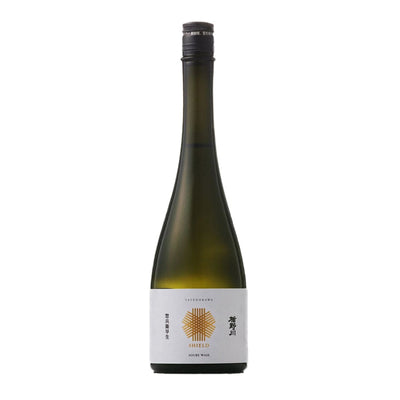The Birthplace of Ginjo: Hiroshima's Sake Revolution by Senzaburo Miura
In the world of sake, Hiroshima proudly claims the title of "The Birthplace of Ginjo." Ginjo, a refined category comprising merely seven percent of all sake, distinguishes itself not only by the degree of rice milling but also by the meticulous process of longer-term, lower-temperature fermentation.
在清酒的世界里,广岛可以自豪地宣称自己是“吟酿的诞生地”。吟酿是一种精制品种,只占所有清酒的7%,它的特点不仅在于碾米的程度,还在于长期、低温发酵的细致过程。
The assertion that ginjo brewing originated in Hiroshima finds its roots in the contributions of Senzaburo Miura. Born in 1847, Mr. Miura led a life marked by challenges, diversities, and, inadvertently, the transformation of Hiroshima's sake production.
吟酿之所以起源于广岛,其主要是在于三浦仙三郎的贡献。三浦先生出生于1847年,他有着充满了挑战和多样化的传奇一生,他在偶然间改变了广岛的清酒生产。

Originally part of a successful family business resembling a general store, Mr. Miura ventured into sake brewing. Seeking expertise, he traveled to Nada, situated partly in Kobe, Hyogo Prefecture—known as the epicenter of sake brewing. However, after four years, his sake consistently spoiled, leading to the closure of the family's brewing enterprise.
三浦仙三郎最初经营着一家比较成功的类似于杂货店的家族企业,后来开始涉足清酒酿造。为了寻求专业知识,他来到了位于兵库县神户市的滩,当时清酒酿造的中心。然而,四年后,他的清酒不断变质,导致家族酿酒企业关闭。
Determined to enhance the quality of sake, Mr. Miura's quest brought him to Fushimi in Kyoto, where he discovered the crucial role of water type in brewing. Recognizing the disparity between hard water in Nada and soft water in Kyoto (and Hiroshima), he learned to adapt techniques to Hiroshima's soft water and shared this insight with the local brewing community.
为了提高清酒的品质,三浦先生来到了京都的富士见,在那里他发现了水的类型在酿造过程中的关键作用。认识到滩的硬水和京都(以及广岛)的软水之间的差异,他学会了适应广岛软水的技术,并与当地酿造公司分享了这一见解。
The impact was profound. Hiroshima's sake rapidly gained acclaim, winning numerous awards. The key to this success lay in the region's soft water, dictating a slow fermentation process at lower temperatures. Senzaburo Miura's innovation was to adjust brewing techniques accordingly, allowing for an extended and meticulous brewing period.
其影响是深远的。广岛的清酒迅速赢得了赞誉,赢得了无数奖项。这一成功的关键在于该地区的软水,这决定了在较低温度下缓慢的发酵过程。三浦仙三郎的创新之处在于相应地调整酿造技术,从而延长和细致地酿造时间。
In essence, Hiroshima's soft water became the catalyst for slow fermentation, prompting the chemically facilitated development of exquisite flavors. Senzaburo Miura's revelation paved the way for the birth of ginjo, characterized by its slow brewing process at lower temperatures.
从本质上讲,广岛的软水成为了缓慢发酵的催化剂,促使产生化学变化产生了精致的风味。三浦仙三郎的发现为吟酿的诞生铺平了道路,其特点是在较低的温度下缓慢酿造。

Therefore, Hiroshima brewers proudly assert that, through the pioneering efforts of Senzaburo Miura, ginjo-shu brewing found its roots in Hiroshima—a testament to the region's unique water and the artistry of extending time for the creation of exceptional sake.
因此,广岛的酿酒师自豪地宣称,三浦仙三郎的开创性努力,为吟酿酒造在广岛打下了根基——这证明了该地区独特的水源,以及为酿造非凡的清酒而延长酿造时间的艺术。
On that note, savor Hiroshima sake—an embodiment of tradition, innovation, and the enduring legacy of Senzaburo Miura's contributions to the world of refined sake. When it comes to Hiroshima-style Junmai Ginjo you can't go wrong with Maboroshi Junmai Ginjo, which is representative of the Hiroshima region which is known for soft water and crisp flavors.
在这一点上,细细品味广岛清酒——传统、创新的化身,以及三浦仙三郎对精致清酒世界贡献的持久遗产。说到广岛式的纯米吟酿,你一定不会错幻纯米吟酿,它是广岛地区的软水和干脆而闻名。
















コメントを残す